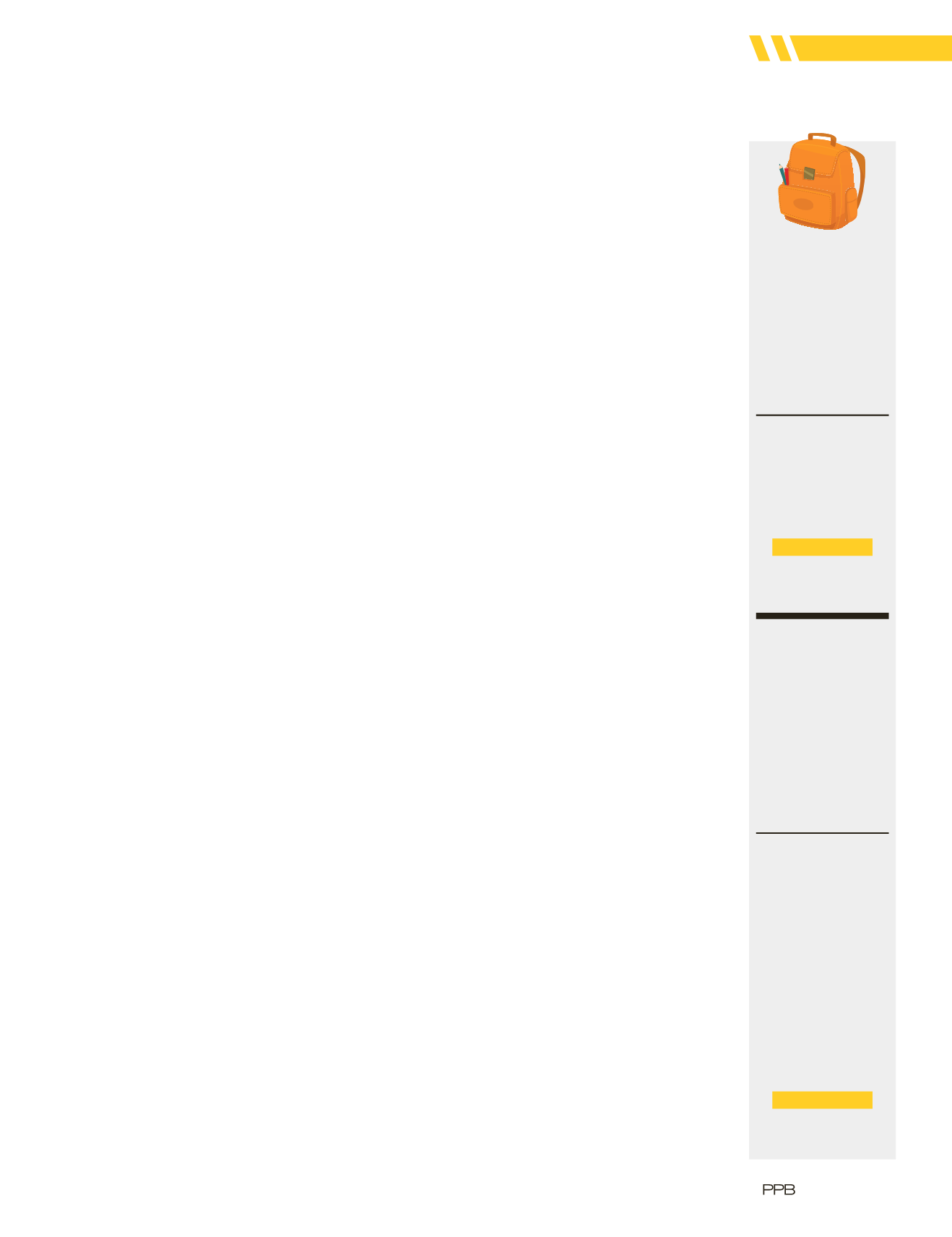

|
MAY 2017
|
69
THINK
shoes, gasoline, food, cars and
trucks. The BAT tax would affect
imports from every country,
including free trade agreement
partners. No exceptions.
Let’s see how this works
in practice with an overly
simplified example.
Suppose you import
promotional backpacks at an
average import cost of $10. You
pay $1.76 in tariffs (17.6 percent
rate) and overhead—including
costs of embroidery in the U.S.—
of $8.74. Your unit sale price is
$21.51, netting a pre-tax profit
of $1.01 and a tax bill (at a rate of
35 percent) of 35 cents.
Under the BAT, the math
changes significantly. Your
corporate tax rate now drops to
20 percent, which is fantastic. But
that lower rate now taxes a much
higher base—your profit
and
the price you pay to import the
backpack
and
the tariff you pay
when you import the backpack.
That’s right, you pay an income
tax on the tariff. Now your total
income tax bill explodes to $2.55,
which is seven times the amount
you paid before and now means
you’re paying an effective tax rate
of 255 percent.
Gulp!
Clearly, you can’t run a business
when the government taxes more
than 250 percent of your profits.
So you will try to pass these costs
along—in the formof higher
prices. But this may not work in a
price-sensitive industry such as
ours, as higher prices may force
customers to choose a less-taxed
advertisingmedium (print or radio
perhaps), lower the number of
items purchased or choose less
expensive promotional products.
You could try to cut overhead, but
don’t forget that your other costs—
such as energy—are also going to
increase since everybody else in
the economy will also face their
own inflationary pressures due to
the BAT.
Proponents tell us that this
won’t happen. They argue that
the BAT will instantaneously
cause a substantial increase
in the value of the U.S. dollar,
immediately lowering the cost
of imports, which would shield
importers (and their consumers)
from cost increases. Yet that
scenario—based on a theory
that even economists can’t agree
upon—provides cold comfort.
Most import transactions, and
certainly nearly all those in the
promotional products industry,
are denominated in dollars.
Moreover, currency rates are
affected bymany, manymore
factors besides trade flows. So the
thought that (a) an exchange rate
change would happen; (b) if it did,
it would happen instantaneously;
or (c) that such changes would
enable contracts to be easily re-
negotiated is pure fantasy.
Proponents also argue that
the BAT is needed to align U.S.
tax policy with that of other
countries. They point to the
system of value added taxes
(VAT) that other countries use to
conjure up an imaginary “Made
in America” tax. Those VATs
are
imposed on imports
from
the United States (and other
countries) and are
rebated on
exports
to the United States (and
other countries). Since these
VATs are border-adjusted—so
goes their logic—it is only fair
for the U.S. to do the same. What
they fail to mention is that those
VATs are border-adjusted sales
taxes, while the House-proposed
BAT would border adjust the U.S.
corporate income tax.
Moreover, if the U.S. succeeds
in doing this, it would be the only
country that is border adjusting
its income tax.
To make matters worse,
enactment of the BAT could
easily trigger a tax and trade war,
as our trading partners retaliate
by imposing countervailing
measures. Some have already
threatened to do so. In the longer
term, the U.S. is likely to see a
challenge in the World Trade
Organization (WTO), since this
plan would appear to violate
several key WTO principles. If
successful, a WTO challenge
would enable other countries to
legally impose punitive tariffs on
U.S. exports—to the tune of $385
billion, according to an estimate
by the Peterson Institute for
International Economics.
It’s no wonder small and large
businesses alike feel the BAT is
an existential threat. A coalition
of more than 400 businesses and
trade associations, including
PPAI and the American Apparel
& Footwear Association (AAFA),
have come together under
the banner of Americans for
Affordable Products (AAP) to push
for comprehensive tax reform that
does not contain the BAT.
So what happens next?
House Republicans expect to
publish details of their tax plan
before summer, while Senate
Republicans, who have expressed
concerns over the BAT, are actively
exploring other options.The
Congressional leadership, along
with theWhite House, has labeled
tax reforma priority andmost
experts agree that some formof
tax reformcan get approved by
this Congress. It’s beenmore than
30 years since the last significant
Current Scenario
$10
(average import cost)
+
$1.76
(duties at 17.6% tariff rate)
+
$8.74
(overhead, including
embroidery)
$20.50
total cost
Sale price:
$21.51
Pre-tax profit:
$1.01
Income taxes paid:
$0.35
After tax profit
$0.66
Under BAT
Proposal
$10
(average import cost)
+
$1.76
(duties at 17.6% tariff rate)
+
$8.74
(overhead, including
embroidery)
$20.50
total cost
Sale price:
$21.51
Pre-tax profit:
$1.01
Income tax on profit:
$0.20
(20% of profit)
Border adjusted tax on
import cost:
$2
(20% of
import cost)
Border adjusted tax on
duties paid:
$0.35
(20% of
duty paid)
Total tax paid:
$2.55
After tax profit
-$1.54
Two Views Of
A Backpack Sale
















